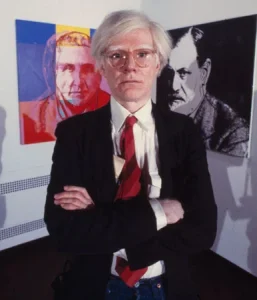The US Supreme Court recently tackled a case of immense significance, delving into the world of artists and copyright law. At the heart of the dispute was the iconic Prince series by Andy Warhol, which sparked a heated debate over the transformative nature of artistic works and the boundaries of fair use. Today, in a landmark ruling, the court concluded that Warhol’s utilization of Lynn Goldsmith’s photograph of Prince did not meet the criteria of transformative use and, therefore, could not be deemed fair use. This high-profile legal battle has captivated stakeholders from various backgrounds, igniting thought-provoking discussions and shedding light on the ever-evolving landscape of creativity and the intricate legal framework that shapes it.

The legal battle stems from Lynn Goldsmith, a celebrated rock star photographer known for her work gracing over 100 album covers. In 1981, Goldsmith was commissioned by Newsweek to photograph the emerging musician Prince, capturing his essence in a series of striking images. Among these photos was a studio portrait that Goldsmith considered a portrayal of vulnerability. However, Newsweek ultimately chose a concert photo instead, leaving the studio photo and others in Goldsmith’s archive for future use or licensing.
Three years later, Vanity Fair commissioned Andy Warhol to create an illustration of Prince for an article. The magazine provided Warhol with one of Goldsmith’s black-and-white photos as a reference point. Warhol went beyond the licensing agreement, creating a set of 16 Prince silkscreens, copyrighted them, and used one of the images for the Vanity Fair article. These silkscreens subsequently became highly sought-after, generating substantial profits for the Andy Warhol Foundation.

Following Prince’s untimely death in 2016, Vanity Fair’s parent company paid the Warhol Foundation to use Warhol’s “Orange Prince” on its cover for a tribute issue. Goldsmith, who received no payment or credit for the use of her original photograph, filed a lawsuit against the foundation, alleging copyright infringement and claiming unpaid licensing fees and royalties.
The crux of the legal debate revolves around the transformative nature of Warhol’s work. The foundation argues that Warhol’s artistic interpretation significantly differs from Goldsmith’s original photograph, making it “transformative” in legal terms. Warhol cropped the image, altered the angle of Prince’s face, adjusted lighting and details, added vibrant colors, hand-drawn outlines, and stark back shading, resulting in a distinct artistic creation that is no longer vulnerable but iconic.
So, what constitutes “fair use”? The four-part fair use test is a legal framework that helps determine whether a particular use of copyrighted material is fair use. The four factors are:
- The purpose and character of the use, including whether such use is of a commercial nature or is for nonprofit educational purposes.
Courts typically focus on whether the use is “transformative.” That is, whether it adds new expression or meaning to the original, or whether it merely copies from the original. - The nature of the copyrighted work.
Using material from primarily factual works is more likely to be fair than using purely fictional works. - The amount and substantiality of the portion used in relation to the copyrighted work as a whole. Borrowing small bits of material from an original work is more likely to be considered fair use than borrowing large portions. However, even a small taking may weigh against fair use in some situations if it constitutes the “heart” of the work.
- The effect of the use upon the potential market for or value of the copyrighted work. Uses that harm the copyright owner’s ability to profit from his or her original work by serving as a replacement for demand for that work are less likely to be fair uses.
If all four factors weigh in favor of fair use, then the use is considered fair.
Lower courts have differed in their rulings. A federal district court judge deemed Warhol’s series transformative, falling under fair use and the Copyright Act. Conversely, a panel of the Second Circuit Court of Appeals disagreed, asserting that judges should not assume the role of art critics in determining the meaning of the works in question. The Supreme Court’s decision determined the Warhol Foundation must pay royalties, licensing fees, and potential damages to Goldsmith.
Regardless of the Supreme Court’s ruling, the case’s outcome will have far-reaching practical implications. The decision has the potential to shift the balance of control between original artists and those who build upon existing works. While favoring greater control by the original artist may protect their rights, it could also hinder the creative endeavors of artists and content creators who rely on inspiration and transformative use.
The case has attracted significant attention, evident from the multitude of friend-of-the-court briefs submitted by various stakeholders. Organizations ranging from publishing associations, motion picture industry bodies, and licensing associations to library and media institutes, and recording industry representatives, weighed in on the matter. The decision holds the power to influence the future of creativity, from music and posters to AI creations and documentaries.


